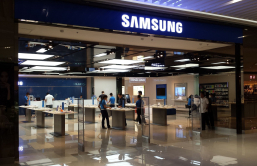
(Photo : BT Creative)
Indian stock markets experienced a significant drop on Monday.
- Indian stock markets fell over 1% due to profit booking and global uncertainties, including the U.S. presidential election and potential U.S. interest rate cuts.
- Investors are adopting a 'selling on any rise' approach, with all 13 major sectors logging losses.
- The market expects the Federal Reserve to opt for a 25 basis point rate cut on November 7, which could spur higher foreign inflows into emerging markets like India.
- Despite the current volatility, there are opportunities for investors in certain sectors, and the market is expected to stabilize in the long term.
Indian stock markets experienced a significant drop on Monday, with shares falling more than 1% due to broad-based profit booking. This comes as volatility spikes in anticipation of the U.S. presidential election and the potential for further U.S. interest rate cuts. The NSE Nifty 50 fell 1.4% to 23,964.6 points, while the BSE Sensex lost 1.32% to 78,679.45. Despite gains in a special one-hour session during the holiday on Friday, the market remains under pressure.
Palka Arora Chopra, director at Master Capital Services, noted that investors are adopting a 'selling on any rise' approach. The market is likely to be guided by the U.S. presidential elections on Tuesday and rate decisions from several global central banks, including the Federal Reserve, later in the week. All 13 major sectors logged losses, indicating a broad-based sell-off.
Analysts predict further profit booking in the coming sessions, with volatility likely to rise further. Investors are awaiting clarity on the political front and the rate trajectory in the world's largest economy. The markets expect the Federal Reserve to opt for a 25 basis point rate cut on November 7. Lower interest rates in the U.S. could spur higher foreign inflows into emerging markets like India.
Market Influences and Expectations
The Nifty volatility index rose to 17.25, its highest since early August. Sun Pharma fell 3% after a U.S. district court granted a preliminary injunction moved by Incyte Corp, preventing it from launching a key drug. Two-wheeler maker Bajaj Auto fell 4.7% after posting a drop in monthly domestic sales in October.
The Indian stock market has been experiencing a period of volatility, with a bearish trend observed in Nifty's daily chart. The positive chart pattern of higher tops and bottoms seems to have been negated by Nifty moving below the last higher bottom of 24,753 levels. This suggests a continuation of the steep downside momentum.
Domestic institutional investors purchased a provisional ₹12,913.96 crore on Thursday, but that wasn't enough to stave off the market plunge as foreign institutional investors liquidated huge derivatives bullish bets and retail clients trading directly sold. Investor nervousness was reflected by the fear gauge India Vix surging 9.86% to close at 13.17, the biggest jump in two months. A rise in Vix implies greater uncertainty while a fall suggests confidence.
Global Factors and Market Performance
The market has been influenced by several factors, including the US Fed's decision, which led to a strong rally helping Nifty and Sensex close at record highs. The rally was primarily driven by positive sentiment in global markets. However, the IT index failed to rebound, mainly due to layoffs and the depreciation of USD. Strong monsoon and festive demand cheer the auto index with an outperformance.
The market participants will closely track upcoming macroeconomic data releases, including the HSBC Composite PMI Flash, HSBC Manufacturing PMI Flash, and HSBC Services PMI Flash. These indicators will provide insights into the country's economic health and could influence market sentiment. Investors will also monitor trends in foreign fund flows and crude oil price movements, which may impact market direction in the coming week.
The US Federal Reserve Chair Jerome Powell indicated that the central bank was ready for a policy pivot. While the inflation remains above 2 per cent, it has shown signs of significant easing. Slowing for a fourth consecutive month, the US CPI (Consumer Price Index)-based inflation came at 2.9 per cent in July, marking the slowest rise since March 2021.
* This is a contributed article and this content does not necessarily represent the views of btin.co.in









